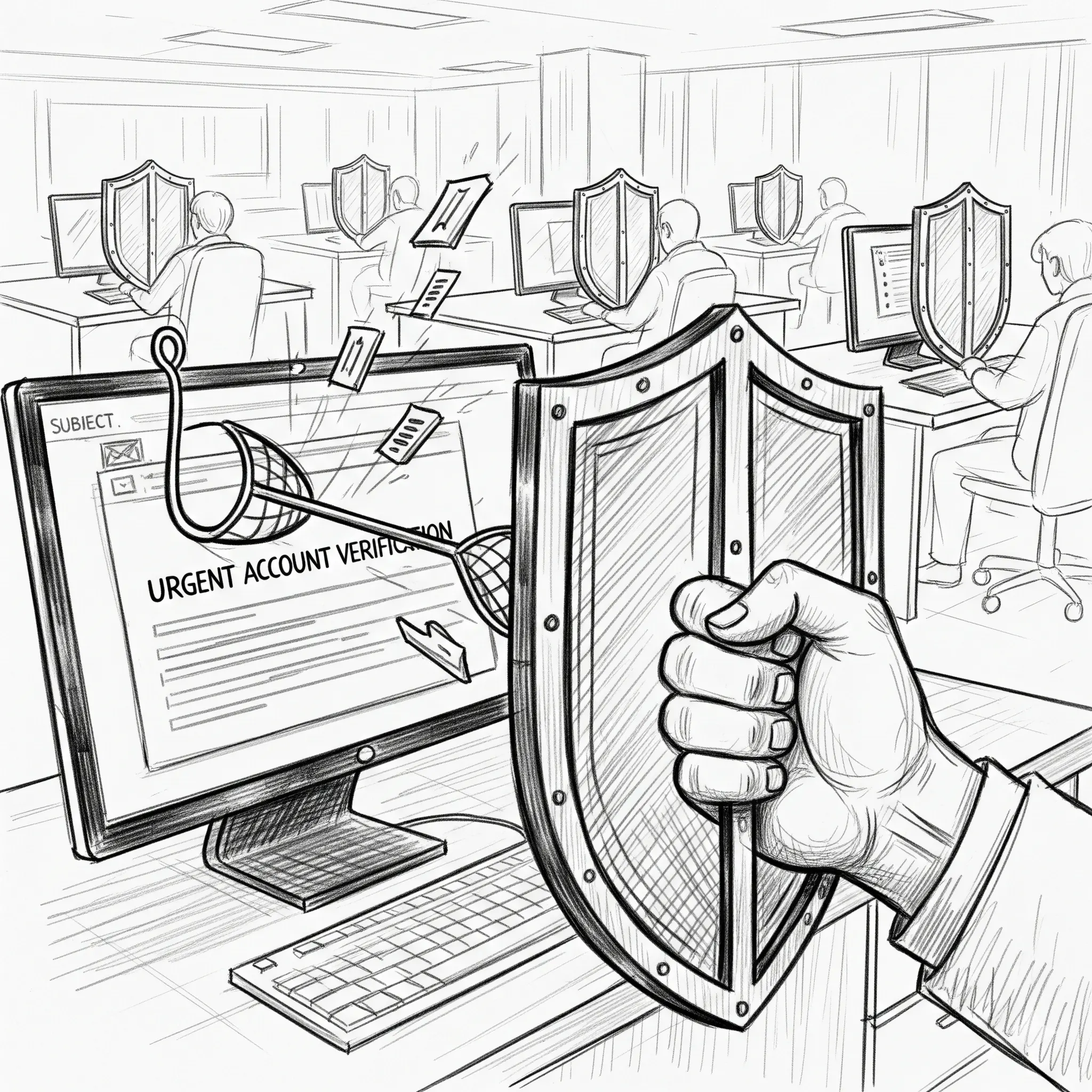Our Website is Still Under Construction (But Our Solutions Are Live!)
In the ever-evolving world of cyber threats, one of the most common and effective attacks is also one of the oldest: phishing. Phishing is a type of social engineering attack where a criminal sends a deceptive message, usually an email, designed to trick the recipient into revealing sensitive information, like passwords, credit card numbers, or other confidential data.
The term “phishing” is a nod to how it works—like a fisherman casting a line. The phisher sends out a bait (a fake email or message) hoping that a victim will take it. These messages often appear to come from a legitimate source, such as a bank, a well-known company like Microsoft or Amazon, or even a colleague. They often create a sense of urgency or fear, pushing you to act quickly without thinking.
How to Spot a Phishing Attempt
While phishing attacks are becoming more sophisticated, there are several red flags you can look for to protect yourself and your business:
- Suspicious Sender Address: Check the sender’s email address. Phishers often use addresses that look similar to a real company’s but have subtle misspellings (e.g., microsft.com instead of microsoft.com).
- Urgent or Threatening Language: Be cautious of emails that demand immediate action or threaten account suspension, legal action, or service cancellation.
- Generic Greetings: Phishing emails often use generic greetings like “Dear Customer” instead of your actual name.
- Poor Grammar and Spelling: Legitimate companies take great care with their communication. Obvious typos and grammatical errors are a common sign of a scam.
- Suspicious Links and Attachments: Never click on a link or download an attachment from an email you don’t trust. Hover your mouse over the link to see the actual URL before you click.
Proactive Steps to Stay Safe
Protecting your business from phishing requires more than just awareness; it requires a proactive strategy.
- Employee Training: Your team is your first line of defense. Regular training can help employees recognize and report suspicious emails.
- Use Strong Security Software: A robust anti-virus solution with anti-phishing capabilities can automatically block known threats.
- Multi-Factor Authentication (MFA): This is one of the most effective ways to secure your accounts. Even if a criminal steals your password, they won’t be able to access your account without a second form of verification.
- Regular Data Backups: If a phishing attack leads to a ransomware infection, having a recent, secure backup is your best defense.
At Orgmented, we believe in a multi-layered approach to cybersecurity. From providing advanced anti-virus solutions to offering comprehensive employee training, we help you build a resilient defense against phishing and other cyber threats.


